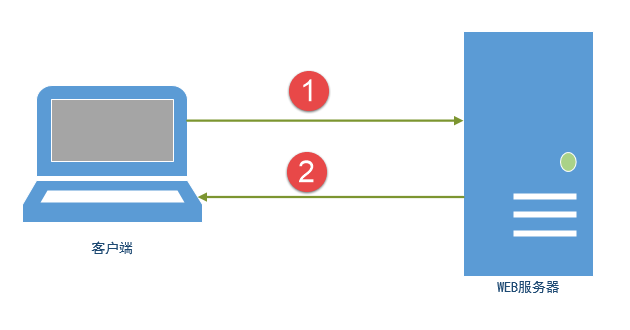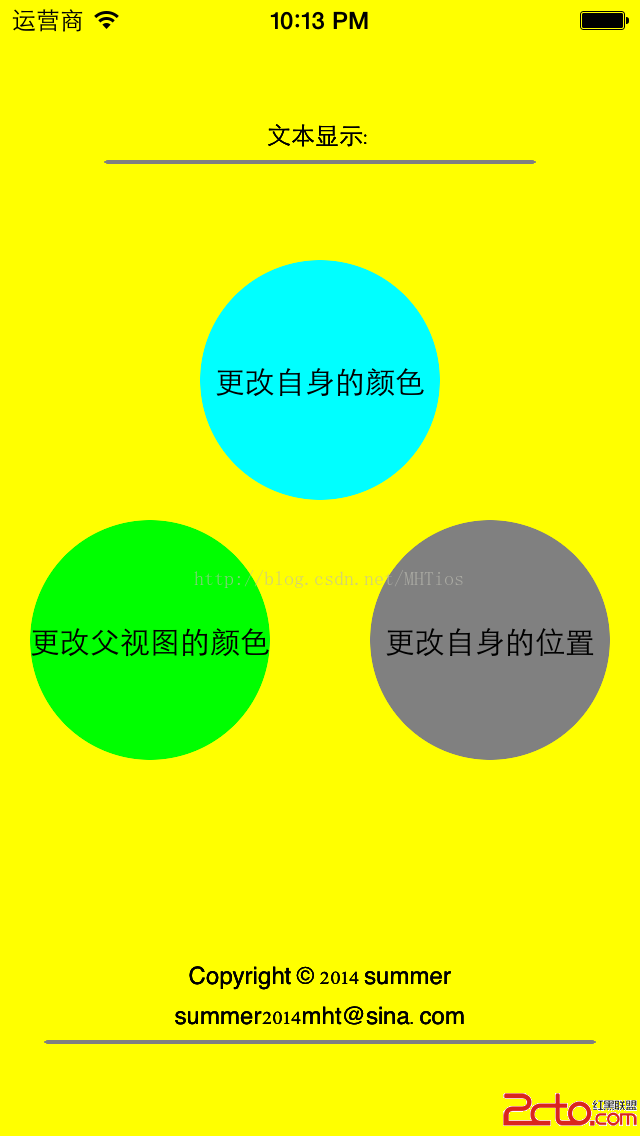MonoTouch.Dialog簡稱MT.D,是Xamarin.iOS的一個RAD工具包。它提供易於使用的聲明式API,不需要使用導航控制器、表格等ViewController來定義復雜的應用程序UI,使得快速開發應用程序UI成為可能。
MT.D的作者是Xamarin的CTO:Miguel de Icaza,MT.D基於表格來創建UI,它提供的API使得創建基於表格的UI變得更加簡單。
API介紹
MonoTouch.Dialog提供了兩種API來定義用戶界面:
Low-level Elements API: 低級別的元素API,通過層次化的樹型結構(類似於DOM)來表示UI及其部件。它提供了最大的靈活性用於創建和控制UI。此外,元素API支持通過定義JSON方式來動態生成UI。
High-Level Reflection API:高級反射API,也稱為綁定API(Binding API),通過Attribute在實體類上標記元素類型等信息,然後基於對象提供的信息自動創建UI,並且提供對象與UI元素之間的自動綁定。注意:此API不提供細粒度的控制。
MT.D內置了一套UI元素,開發人員也可以通過擴展現有UI元素或者創建新的元素來支持自定義布局。
此外,MT.D內置了一些增強用戶體驗的特性,比如”pull-to-refresh”下拉刷新、異步加載圖片、和搜索的支持。
在使用MT.D之前,有必要對它的組成部分進行了解:
DialogViewController:簡稱DVC,繼承自UITableViewController,所有MT.D的元素都需要通過它來顯示到屏幕上。當然,也可以像普通的UITableViewController一樣來使用它。
RootElement:是DVC的頂層容器,它包含多個Section,然後每個Section包含UI元素。RootElement不會被呈現在界面上,而是它們的子元素Section及Element被呈現。
Section:Section在表格中作為一個單元格的分組呈現(與UITableView的Section一樣),它有Header和Footer屬性,可以設置成文字或者是自定義視圖。
Element:Element即元素作為最基本的控件,表示TableView的實際單元格,MT.D內置了各種不同類型的元素。
DialogViewController(DVC)
元素API和反射API都是使用DialogViewController來呈現,DVC繼承自UITableViewController,所有UITableViewController的屬性與方法都可以在DVC上使用。
DVC提供了多個構造函數來對它進行初始化,這裡只看參數最多的一個構造函數:
DialogViewController(UITableViewStyle style, RootElement root, bool pushing)
style即列表樣式,默認都是UITableViewStyle.Grouped分組顯示,可以設置為UITableViewStyle.Plain不分組。
root即根元素,它下面的所有Section/Element都會被DVC呈現出來。
pushing參數用於是否顯示返回按鈕,一般用在有UINavigationController的時候。
例如,創建一個不分組顯示的DVC:
var dvc = new DialogViewController(UITableViewStyle.Plain, root)
在實際應用開發中,一般很少會直接創建DVC的實例,而是通過繼承的方法對每一個視圖進行定制:
class LwmeViewController: DialogViewController {
public LwmeViewController(): base(UITableViewStyle.Plain, null) {
this.Root = new RootElement("囧月") {
//...創建Section及Element
};
}
}
然後通過重寫DVC的一些方法來定制自己的視圖。
在完全使用MT.D開發的app中,可以把DVC做為根視圖控制器:
[Register("AppDelegate")]
public partial class AppDelegate : UIApplicationDelegate
{
UIWindow window;
public override bool FinishedLaunching(UIApplication app, NSDictionary options)
{
window = new UIWindow(UIScreen.MainScreen.Bounds);
window.RootViewController = new LwmeViewController();
window.MakeKeyAndVisible();
return true;
}
// ...
}
假如app需要使用UINavigationController,可以把DVC作為UINavigationController的根視圖控制器:
nav = new UINavigationController(new DialogViewController(root));
window.RootViewController = nav;
RootElements
DialogViewController需要一個RootElement作為根節點,它的子節點只能是Section,各種Element必須作為Section的子節點來呈現。
// 在使用NavigationController的時候,RootElement的Caption會被呈現為NavigationItem的內容
var root = new RootElement ("囧月 - 博客園") {
new Section("隨筆") { // 分組的文字
new StringElement("MonoTouch.Dialog") // 元素
}
new Section("評論") {
new EntryElement("內容")
}
}
RootElement還可以作為Section的子元素,當這個RootElement被點擊的時候,實際上會打開一個新的視圖,如下(官方DEMO):
var root = new RootElement ("Meals") {
new Section ("Dinner"){
new RootElement ("Dessert", new RadioGroup ("dessert", 2)) {
new Section () {
new RadioElement ("Ice Cream", "dessert"),
new RadioElement ("Milkshake", "dessert"),
new RadioElement ("Chocolate Cake", "dessert")
}
}
}
}
此外,還可以通過LINQ(語句或表達式)和C# 3.0新增的對象和集合初始化語法來創建元素的層次結構:
var root = new RootElement("囧月-lwme.cnblogs.com") {
new string[] {"隨筆", "評論", "RSS"}.Select(
x => new Section(x) {
"內容1,內容2,內容3,內容4".Split(',').Select(
s => new StringElement(s, delegate {
Console.WriteLine("內容被點擊");
})
)
}
)
}
通過這種做法,可以很容易的結合XML或數據庫,完全從數據創建復雜的應用程序。
Sections
Section用來對Element元素進行分組顯示,它可以包含任何標准內容(Element/UIView/RootElement),但RootElement只能包含它。
可以把Section的Header/Footer設置為字符串或者UIView:
var section = new Section("Header", "Footer") // 使用字符串
var section = new Section(new UIImageView(Image.FromBundle("header.png"))); // 使用UIView
內置元素介紹
MT.D內置了這些元素:
StringElement:呈現為普通的文本,左邊為Caption右邊為Value
StyledStringElement:繼承自StringElement,使用內置的單元格樣式或自定義格式,提供了字體、顏色、背景、換行方式、顯示的行數等屬性可供設置
MultilineElement:呈現為多行的文本
StyledMultilineElement:繼承自MultilineElement,多了一些可以設置的屬性(類似StyledStringElement)
EntryElement:文本框,用於輸入普通字符串或者密碼(isPassword參數),除了Caption/Value外,還有Placeholder屬性用於設置文本框提示文本。除此之外,還可以設置KeyboardType屬性,用來限制數據輸入:
Numeric 數字
Phone 電話
Url 網址
Email 郵件地址
BooleanElement:呈現為UISwitch
CheckboxElement:呈現為復選框
RadioElement:呈現為單選框,需要放置在有RadioGroup的RootElement的Section中,使用起來顯得有點麻煩
BadgeElement:呈現為垂直居中的文本左邊一個圖標 (57x57)
ImageElement:用於選取圖片
ImageStringElement:繼承自StringElement,類似於BadgeElement
FloatElement:呈現為UISlider
ActivityElement:呈現為loading加載動畫
DateElement:日期選擇
TimeElement:時間選擇
DateTimeElement:日期時間選擇
HtmlElement:呈現為一個普通的文本,通過Url屬性設置網址,點擊之後自動打開一個UIWebView加載網站
MessageElement:呈現為類似收件箱郵件的樣式,有許多屬性可以設置(Body/Caption/Date/Message/NewFlag/Sender/Subject)
LoadMoreElement:呈現為一個用於加載更多的普通文本,點擊後顯示加載動畫,在相應的事件裡進行一些邏輯處理
UIViewElement:所有類型的UIView都可以通過UIViewElement來呈現到表格上
OwnerDrawnElement:這是一個抽象類,可以通過繼承它來創建自定義的視圖
JsonElement:繼承自RootElement,用於加載JSON內容來自動創建視圖(從本地/網絡上的json文件/字符串)
官方也給出了一個元素的結構樹:
Element
BadgeElement
BoolElement
BooleanElement - uses an on/off slider
BooleanImageElement - uses images for true/false
EntryElement
FloatElement
HtmlElement
ImageElement
MessageElement
MultilineElement
RootElement (container for Sections)
Section (only valid container for Elements)
StringElement
CheckboxElement
DateTimeElement
DateElement
TimeElement
ImageStringElement
RadioElement
StyleStringElement
UIViewElement
處理動作
Element提供了NSAction類型的委托作為回調函數來處理動作(大部分Element都有一個NSAction類型的Tapped事件),比如處理一個觸摸事件:
new Section () {
new StringElement ("點我 - 囧月",
delegate { Console.WriteLine ("元素被點擊"); })
}
檢索元素的值
繼承自Element的元素默認有Caption屬性,用來在單元格左邊顯示標題;大部分Element都有一個Value屬性,用來顯示在單元格右邊。
在回調函數中通過Element的屬性來獲取對應的值:
var element = new EntryElement ("評論", "輸入評論內容", null);
var taskElement = new RootElement ("囧月-博客-評論"){
new Section () { element },
new Section ("獲取評論內容") {
new StringElement ("獲取",
delegate { Console.WriteLine (element.Value); })
}
};
設置元素的值
如果元素的屬性是可操作的,如EntryElement.Value,可以直接通過屬性設置它的值。
不可操作的如EntryElement.Caption,或者StringElement.Value/StringElement.Caption屬性,直接設置元素的值不會反映在界面上,需要通過RootElement.Reload方法來重新加載才可以更新內容:
var ee = new EntryElement ("評論", "輸入評論內容", null);
var se = new StringElement("時間", DateTime.Now.ToString());
var root = new RootElement ("囧月-博客-評論"){
new Section () { ee, se },
new Section ("獲取評論內容") {
new StringElement ("獲取",
delegate {
Console.WriteLine (element.Value);
// 直接設置元素內容
ee.Value = DateTime.Now.ToString();
// 不可直接設置的屬性
se.Caption = "新標題";
se.Value = DateTime.Now.ToString();
root.Reload(se, UITableViewRowAnimation.None);
})
}
};
反射API
反射API通過使得創建UI界面變得非常簡單:
創建一個類,並使用MT.D的Attribute來標記它的字段/屬性
創建BindingContext的實例,並把上一步類型的實例作為參數
創建DialogViewController,並把它的Root設置為BindingContext的Root
先來一個簡單的例子:
class Blogger {
[Section("登錄博客"),
Entry("輸入用戶名"), Caption("用戶名")]
public string Username;
[Password("輸入密碼"), Caption("密碼")]
public string Password;
[Checkbox, Caption("下次自動登錄")]
public bool Remember;
[Section("開始登錄", "請確認你輸入的信息"),
Caption("登錄"),
OnTap("Login")]
public string DoLogin;
}
public class LwmeViewController: DialogViewController {
BindingContext context;
Blogger blog;
public LwmeViewController(): base(UITableViewStyle.Grouped, null) {
blog = new Blogger { Username = "囧月" };
context = new BindingContext(this, blog, null);
this.Root = context.Root;
}
public void Login() {
context.Fetch(); // 通過Fetch方法把文本框輸入的信息反饋到blog實例上
if (string.IsNullOrWhiteSpace(blog.Username) ||
string.IsNullOrWhiteSpace(blog.Password)) {
var tip = new UIAlertViewController( "出錯提示", "用戶名和密碼必須填寫", null, "確定", null);
tip.Show();
}
// 進行登錄操作...
}
}
為了避免阻塞UI線程(用戶界面假死),一般都會使用異步操作,比如上面的登錄可能使用WebClient的UploadStringAsync異步方法,然後在相應事件中進行操作;這裡需要注意,使用了異步方法之後,在相應的事件中可能就不是UI線程,將不能直接對UI相關元素進行操作,類似於Winform/Wpf,MonoTouch提供了兩個方法用於在非UI線程操作UI元素:InvokeOnMainThread/BeginInvokeOnMainThread。
現在,來看一下MT.D為反射API提供了多少Attribute:
EntryAttribute:文本框
PasswordAttribute:密碼輸入框,繼承自EntryAttribute
CheckboxAttribute:復選框
DateAttribute:日期
TimeAttribute:時間
DateTimeAttribute:日期時間
HtmlAttribute:普通的文本,點擊後打開一個UIWebView
MultilineAttribute:多行文本
RadioSelectionAttribute:呈現為RadioElement,字段/屬性需要是int類型,數據源需要實現IEnumerable接口
CaptionAttribute:用於設置元素的Caption,如果不設置的話,將使用元素的屬性/字段名
AlignmentAttribute:用於設置元素內容的對齊方式
OnTapAttribute:用於設置點擊事件,參數為一個字符串對應執行的方法名
RangeAttribute:用於設置UISlider的值范圍
SkipAttribute:使用此Attribute的屬性/字段將不被用於作為UI元素呈現
除了以上列出的,還有3個元素沒有對應的Attribute:
StringElement:即普通文本,沒有對應的Attribute,string類型的字段/屬性默認會被呈現為StringElement
BooleanElement:即UISwitch,bool類型的字段/屬性會被呈現為BooleanElement
FloatElement:即UISlider,float類型的字段/屬性會被呈現為FloatElement
再來一個例子:
class Blogger {
public string Username = "囧月"; // 呈現為StringElement
public bool Remember; // 呈現為BooleanElement
public float Value; // 呈現為FloatElement
[Multiline]
public string Description;
[Range(0, 100)]
public float Value2; // 可以使用Range來標明范圍
[Skip]
public string ignoreField; // 不被呈現
}
另外,對於RadioElement類型的元素,除了可以使用RadioSelectionAttribute外,MT.D還提供了一個方法支持直接從Enum類型:
public enum Category {
Blog,
Post,
Comment
}
class Blogger {
public Category ContentCategory;
}
class Blogger2 {
[RadioSelection("CategorySource")] // 設置數據源
public int ContentCategory; // 字段/屬性必須是int類型
// 數據源只要實現IEnumerable接口,不限制類型
public List<string> CategorySource = new List<string>{ "Blog", "Post", "Comment" };
}
注意:字段/屬性的類型必須與相應的Element的值類型對應,否則不會被呈現,比如:
EntryElement只能使用string類型,用int就不會被呈現
FloatElement只能使用float類型,double/decimal類型都無效
BooleanElement只能使用bool類型
RadioElement類型只能使用enum類型或者int類型並設置數據源
DateElement/TimeElement/DateTimeElement只能使用日期相關類型
反射API大大簡化了UI界面的開發,但是它不能很好支持細粒度控制,如果對UI定制要求比較高,建議還是直接使用元素API。
當然,如果只是偶爾需要直接訪問某個Element,可以通過DVC的Root屬性來找到對應的Element,但是操作起來比較繁瑣:
var section1 = this.Root[0];
var element1 = section1[0] as StringElement;
JSON元素
MT.D支持從本地/遠程的json文件、或者已解析的JsonObject對象實例來創建JSON元素。
假如有這麼一個簡單的json文件:
{
"title": "囧月",
"sections": [
{
"elements" : [
{
"id" : "lwme-username",
"type": "entry",
"caption": "用戶名",
"placeholder": "輸入用戶名"
},
{
"id" : "lwme-date",
"type": "date",
"caption": "日期",
"value": "00:00"
}
]
}
]
}
通過內置的方法來加載它:
var root = JsonElement.FromFile("lwme.json"); // 加載本地json
var root = new JsonElement("load from json", "lwme.cnblogs.com/lwme.json"); // 加載遠程json
var dvc = new DialogViewController(root); // 可以直接把JsonElement作為根元素
另外,還可以通過json文件裡設置的id來獲得對應的Element:
var username = taskElement ["lwme-username"] as EntryElement;
var date = taskElement ["lwme-date"] as DateElement;
通過json元素這種方式,可以創建非常靈活的界面,同時也能大大減小客戶端的大小。
json文件裡各種標記的屬性對應元素的各種屬性,完整的JSON格式見官方文檔:http://docs.xamarin.com/guides/ios/user_interface/monotouch.dialog/monotouch.dialog_json_markup/。
其他特性
Pull-to-Refresh(下拉刷新)支持
DialogViewController提供了一個RefreshRequested事件,只需要實現它就可以為表格提供下拉刷新支持:
var dvc = new DialogViewController(root);
dvc.RefreshRequested += (s, e) {
// 處理數據... lwme.cnblogs.com
dvc.ReloadComplete(); // 處理完成之後調用這個方法完成加載
};
另外,也有TriggerRefresh()方法來直接調用下拉刷新;還可以通過重寫MakeRefreshTableHeaderView(RectangleF)方法來自定義刷新頭部的內容。
搜索支持
DialogViewController提供了一些屬性及方法用於搜索的支持:
EnableSearch:啟用搜索支持
SearchPlaceholder:搜索框提示文本
StartSearch():開始搜索
FinishSearch():完成搜索
PerformFilter():執行過濾
SearchButtonClicked():按下搜索按鈕
OnSearchTextChanged():搜索文本框內容改變
SearchTextChanged:事件,同上
一般情況下只需要通過EnableSearch屬性來啟用搜索即可,更多的定制可以通過以上的方法/事件來實現。
後台加載圖片
MT.D提供了一個ImageLoader用於在後台加載圖片:
new BadgeElement( ImageLoader.DefaultRequestImage( new Uri("http://lwme.cnblogs.com/xx.png"), this), "囧月")
// 等同於ImageLoader.DefaultLoader.RequestImage方法
下載的圖片會被緩存在內存中(默認緩存50張圖片),ImageLoader.Purge()方法可用於清理緩存。更多的自定義操作可以通過創建ImageLoader實例來實現。
創建自定義元素
可以通過繼承Element或者更具體的類型來創建自定義的元素。創建自定義元素將需要重寫以下方法:
// 為元素創建UITableViewCell,設置內容及樣式並呈現在表格上
UITableViewCell GetCell (UITableView tv)
// (可選)設置元素的高度,重寫這個方法需要實現IElementSizing接口
float GetHeight (UITableView tableView, NSIndexPath indexPath);
// (可選)釋放資源
void Dispose (bool disposing);
// (可選)為元素呈現摘要內容,比如StringElement就呈現為Caption
string Summary ()
// (可選)元素被點擊/觸摸時,很多元素的Tapped事件就是在這個方法裡實現
void Selected (DialogViewController dvc, UITableView tableView, NSIndexPath path)
// (可選)如果需要支持搜索,需要在方法中檢測用戶輸入是否匹配
bool Matches (string text)
static NSString MyKey = new NSString ("lwmeCustomElementKey");
protected override NSString CellKey {
get {
return MyKey;
}
}
關於數據驗證
MT.D沒有為Element提供任何驗證的方法,如果需要對用戶輸入進行驗證,自己實現驗證邏輯,比如元素的Tapped事件中進行數據驗證:
var ee = new EntryElement ("評論", "輸入評論內容", null);
var root = new RootElement ("囧月-博客-評論"){
new Section () { ee },
new Section ("獲取評論內容") {
new StringElement ("獲取",
delegate {
if (string.IsNullOrEmpty(ee.Value)) {
var tip = new UIAlertViewController(
"出錯提示", "內容必須填寫", null, "確定", null);
tip.Show();
}
})
}
};




